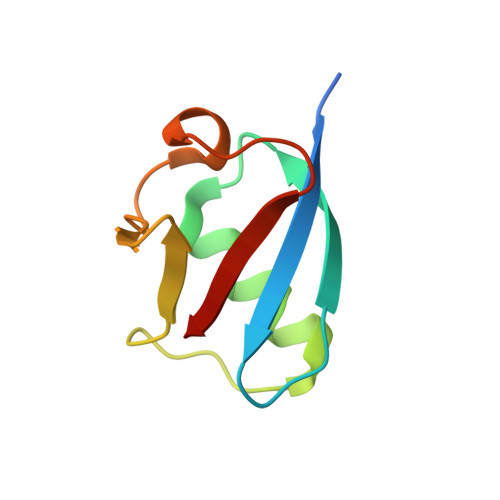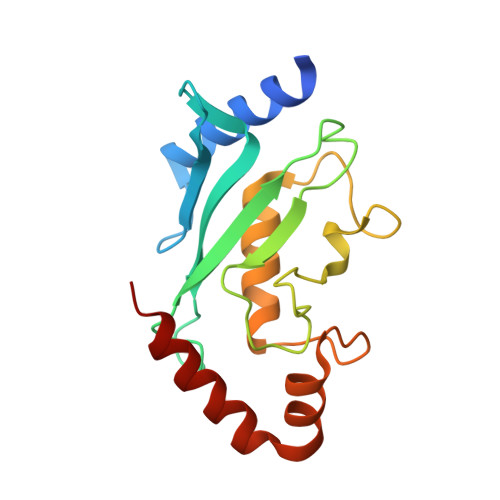DNA repair and global sumoylation are regulated by distinct Ubc9 noncovalent complexes.
Prudden, J., Perry, J.J., Nie, M., Vashisht, A.A., Arvai, A.S., Hitomi, C., Guenther, G., Wohlschlegel, J.A., Tainer, J.A., Boddy, M.N.(2011) Mol Cell Biol 31: 2299-2310
- PubMed: 21444718
- DOI: https://doi.org/10.1128/MCB.05188-11
- Primary Citation of Related Structures:
3RCZ, 3RD2 - PubMed Abstract:
Global sumoylation, SUMO chain formation, and genome stabilization are all outputs generated by a limited repertoire of enzymes. Mechanisms driving selectivity for each of these processes are largely uncharacterized. Here, through crystallographic analyses we show that the SUMO E2 Ubc9 forms a noncovalent complex with a SUMO-like domain of Rad60 (SLD2). Ubc9:SLD2 and Ubc9:SUMO noncovalent complexes are structurally analogous, suggesting that differential recruitment of Ubc9 by SUMO or Rad60 provides a novel means for such selectivity. Indeed, deconvoluting Ubc9 function by disrupting either the Ubc9:SLD2 or Ubc9:SUMO noncovalent complex reveals distinct roles in facilitating sumoylation. Ubc9:SLD2 acts in the Nse2 SUMO E3 ligase-dependent pathway for DNA repair, whereas Ubc9:SUMO instead promotes global sumoylation and chain formation, via the Pli1 E3 SUMO ligase. Moreover, this Pli1-dependent SUMO chain formation causes the genome instability phenotypes of SUMO-targeted ubiquitin ligase (STUbL) mutants. Overall, we determine that, unexpectedly, Ubc9 noncovalent partner choice dictates the role of sumoylation in distinct cellular pathways.
- Department of Molecular Biology, The Scripps Research Institute, La Jolla, California 92037, USA.
Organizational Affiliation:

















